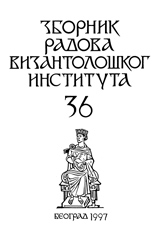
Belos appartenait à la dynastie des joupans de Rascie qui, sous l'autorité suprême de l'Empire byzantin, administraient les pays serbes depuis la fin du Xlème siècle. C'est au cours du XIIème siècle que cette région intérieure de la péninsule des Balkans, appelée Rascie ou Raska d'après la ville de Ras (aujourd'hui Novi Pazar), est devenue le centre de l'Etat serbe.
More...Keywords: Basil I (867–886); Southern Slavs; baptism of the Serbs and Croats; Christianization; Byzantine policy
Basil I had serious plans about the ecclesiastical policy towards the Slavs of Greece, and highly developed idea to bring the ecclesiastical organization of the Croats and Serbs under the control of Constantinople. In the case of Croatia — he had limited success — only between the end of 877 and first half of 879. In the case of Serbia he probably managed, since ca. 872/873 to dissolve the previous ecclesiastical organization of the Roman Church and to link the Serbs closer to Constantinople. The same conclusion is valid for Dioclea. The Croat and Serb conversion related to Basil I and presented in Constantine Porphyrogenitus’ treatise De administrando imperio and Vita Basilii, came as an outcome of fighting over ecclesiastical rights in the former praefectura Illyrici between Constantinople and Rome. It seems that Constantinople from that time was enforcing his ecclesiastical domination over Serbia and Dioclea.
More...
Keywords: Christianization; Europe
In dem Artikel stellt der Autor die Christianisierung in Mitteleuropa in der Zeit des Hl. Bruno von Querfurt vor. Unter Mitteleuropa versteht der Autor die Gebiete zwischen Elbe und ihre Verlängerung zu Istria und die Ostgrenze Ungarn und Polen du die Südgrenze Ungarn und Kroatien. Diese Gebiete waren von Slaven besiedelt, doch nicht vollständig. Baltische Völker wie Litauen, Preußen du Sudauen hatten dort Wohnungen. Die Ungar waren nomadischen-mongolische Volksstämme, die im 9. Jahrhundert bis zur Donau lebten. In dem Artikel hat der Autor die Klassifikation der Nationen in Mitteleuropa gemacht, ihre Geschichte vorgestellt und innere und äußere Abhängigkeiten beschreiben.
More...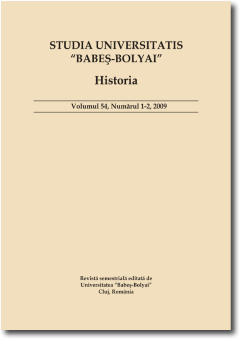
Keywords: women; testaments; offerings; memorial art; liturgy; patronage; Transylvania.
In the last few decades research has focused on the theme of memoria, a manifold phenomenon which pervaded the everyday life of medieval men and women. In the conception of that time, the remembrance of the deceased was intimately related to his/her personal salvation. Therefore, medieval men and women alike invested a significant share in memorial programmes intended to ensure their presence even after death in the society of the living. The latter, through prayers and suffrages, were supposed to help the dead in their purgatorial journey and in the quest for redemption. People already made provision during their lifetime for the hereafter, and strove for viaticum: an accumulation of good deeds that could likewise ensure good memory, and eventually the reward of eternal life. Gifts made to religious institutions and individuals were considered instrumental for triggering remembrance. The expected counter-gifts consisted in masses and liturgical services, prayers pro anima and suffrages for a determined period of time or for eternity. Memoria, closely related to personal identity, was largely incited by visual stimuli or props: inscriptions bearing the name of the deceased, donor portraits, coats of arms, tombstones, epitaphs etc. This study aims to analyse some late medieval Transylvanian evidence from the point of view of memoria. The main purpose is to identify and emphasise specific strategies (related to gender, or distinct social classes) adopted by Transylvanian laymen and (particularly) women in order to ensure their remembrance. The study relies upon different categories of sources, both written (wills, dona pia recorded in documents, registers of benefactors etc.) and visual (donor portraits, heraldry, monumental or public inscriptions, funeral slabs etc.).
More...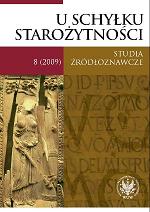
Keywords: Jezabel; Eudoksja; Jan Chryzostom; konflikt
The purpose of this article is to describe the reasons of the first conflict between Empress Eudoxia and bishop John Chrysostom mentioned in the historical sources. It took place between autumn 400 and spring 401 A.D. As Palladius reveals in the Dialogue on the Life of St. John Chrysostom, among the accusations against Chrysostom presented at the Synod of the Oak held in July 403, there was a charge of treason for calling the empress a Jezabel. Pseudo-Martyrios, a direct witness to events at Constantinopole in the years 398-407, in his funeral oration on John Chrysostom many times referred to Eudoxia as a second Jezebel. Moreover, the comparison also appears in homilies, commonly considered to be non-authentic, only imitating Chrysostom’s sermons. Later writers (cf. The Life of Epiphanius by Polybius, the Bishop of Rhinokorura, The Life of Porphyry, Bishop of Gaza by Marcus Diaconus, The Lives of Chrysostomos by Theodoros of Tirmithus and Pseudo-Georgos of Alexandria) understood this comparison as a simple parallel with a biblical story: greedy Eudoxia desired and seized the property of a local widow, Chrysostom protested against the court like the prophet Elias. The author of the article points out another interpretation of this comparison and of the conflict between the bishop and the Empress. John Chrysostom who invented the concept of the biblical parallel consequently uses the motive of Jezebel in two contexts: the stories of prophet Elias, escaping from the Qeen in fear, and as an example of a bad queen, who forced her husband, king Ahab, to the evil. The latter image is, according to the author of the article, appropriate to Basilissa Eudoxia. Analyzing numismatic sources, the author shows that Eudoxia introduced a significant change in the image of ideology of Empress’s power, particularly visible on her coins. It seems that the moment she received the title of Augusta in 400, both she and her court began to introduce the new ideology of power. Then John Chrysostom noticed a dark and too influential queen – a second Jezebel – in the humble and pious wife of the emperor, commonly considered as inefficient.
More...Le Catholicisme en Banat au XI-XVIII siècle. L'enseignement teologique catholique de la diocèse de Cenad. L’étude y présenté met en évidence la réalité que les débuts de l’enseignement catholique de Banat doit être raportés au succès d’une éclatante activité missionnaire déroulée par l’un des plus rémarcables évêques qu’on a vecu dans la diocèse de Cenad: Gérard de Sagredo une fois abbé du monastère San Giorgio de Venise. Arrivé dans le royaume hongrois par la force des circonstances, Gérard de Sagredo sera un véritable champion du royaume hongrois dans l’éntendu espace du Banat gouverné dans ce temps là par l’un des plus forts voïvodes appéllé Ahtum. Gérard a fondé un système d’enseignement téologique propre même au moment quand il a ouvert la première école catholique de Banat après l’année 1038. On y a activé beaucoup de professeurs célèbres qui lui ont donné un grand prestige. Cette école a formé des curés et aussi un personnel de chancellerie très qualifié réalité pour laquelle l’enseignement téologique fondé par Gérard a été elevé au rang de „Place de Confirmation” d’où on pourrait obtenir des documents variés specialement des actes officieles. Aprés une brève interruption en 1241, le système d’enseignement catholique réalisé par Gérard a continué d’activer sans cesse jusqu’ au XVIII siècle. L’affirmation puissante de la Reforme et en même temps la domination de l’Empire Ottoman ont bulversé profondement l’esprit réligieux catholique de Banat. Il n’a pas été actif jusqu’ à XVIII siècle quand les Habsbourgs ont repris les territoires perdus, le Banat specialèment. Ici la renaissance du catholicisme on doit être atribuée à une remarcable activité missionaire faite par des ordres monacales qui l’ont révitalisé tout entière. Leur apport a constitué un véritable fondement sur lequel l’évêque Kőszeghy László a édifié en XIX siècle une autre politique eclesiastique avec laquelle on a été inauguré un nouveau commencement aux conséquences les plus avantageux pour tout l’enseignement catholique de Banat.
More...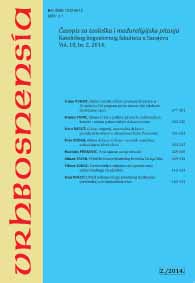
Keywords: church and state; religio illicita; delictum lesae divinitatum; delictum lesae majestatis; persecution; Edict of Galerius; “Edict of Milan”; Milan agreement; Nicomedian rescript; tolerance; freedom of religion; Roman pantheon; Church as a legal entity
During the fourth century AD the approach of the state authority of the Roman Empire to freedom of religion passed through various stages. Until 311 AD, the pagan religion of Rome was the state religion, and Christianity was violently persecuted. That year, Emperor Galerius issued an edict which declared tolerance of Christianity, but paganism continued to be the state religion. However, in 313 AD the status of a “state” religion was abolished when religious freedom was declared under Licinius’ rescript following imperial arrangements in Milan. In the coming decades, Christianity began to enjoy more and more privileges and in 380 AD it was declared the state religion while other religions were tolerated less and less. In a period of barely 70 years (311 to 380 AD) Roman society and the Roman state moved from an official, pagan religion, through tolerance of Christianity (Galerius edict in 311 AD) and freedom of all religions (Nicomedian rescript in 313 AD), to Christianity as the state religion. The letter of Emperor Licinius of 313 AD was known from the late 16th century until 1891 as the “Edict of Milan”: it was thought to have been issued in Milan in February 313 AD by Emperor Constantine. However, in 1891 Otto Seeck published a study arguing that the document was not an edict, that it was not written in Milan but in Nicomedia, that it was not issued by Constantine but by Licinius, and that it expanded the freedom given to Christians two years earlier by Emperor Galerius with a document that had the form and authority of an imperial edict. These facts are today known to experts but not to the general public, which continues to speak about Constantine’s Edict of Milan. It is interesting to note that Cardinal Scola, Archbishop of Milan, in his public appearances in Niš, during celebrations that marked the 1,700th anniversary of the creation of this document, at least twice referred to it as the “Edict of Milan”. As well as this, looking from a legal perspective, the letter from Nicomedia did not have the form of an edict, as other imperial edicts did; nor was it sent throughout the empire. It took the form of a rescript and it was sent to two individuals, to the governor of Bithynia and the governor of Palestine. It is therefore more appropriate perhaps to speak of the Milan agreement between two emperors and the Nicomedian Rescript. Commenting on this process and on the position and strength of the Church and its relationship with the government of the state at the end of the fourth century, St. Jerome made a very interesting observation, which is worth mentioning at the end of this overview as a lucid comment on past events and also as a useful reminder to those who are still involved in the regulation of church-state relations. St. Jerome wrote: “The Church, since it came under the rule of the Christian emperors, grew in power and wealth, but decreased in virtue.”
More...This article deals with the mythographic genesis of sacred topography, and does so in the methodological space between hierophany and hierotopy. The author presents three angles to detangle this matter: the definition of sacred space in the Legend of the Wood of the Cross, the figure of Seth in Christian tradition, and the impact of the Legend on medieval iconography. The western European Middle Ages have made use of an hierotopical ‘prehistory’ to shape their perception of Jerusalem and the holy places. The Legend of the Wood of the Cross looks back at the cross’ biology, its roots in paradise and its vigorous journey through the Holy Land up to its destination in the Jerusalem-centre.
More...Keywords: FIVE UNPUBLISHED MONUMENTS ; ARCHEOLOGICAL COLLECTION ; ANTIQUITY MUSEUM OF KOSOVA
As full and relief sculpture worked in marble during the antiquity in today’s Kosova that offers quite important monuments, among which are present both, those of high artistic quality made in promi-nent antique centers for sculptures, and the epigraphic monuments worked in any kind of stone offer important data, too. This time the object of the study are five esamples from the archaeological collection of the antiquity in the Museum of Kosova, for which has not been spoken until now. They are part of different topics. One has to do with a female head (fig. 1 a-c), the other with a female statue (2 a, b) and three others with Goddesses: statuary group of Venus (fig. 3), nymph relief (fig. 4) and the altar dedicated to Dardanica godess (fig. 5). Probably three of them (the statue and two cult monuments) were found in Ulpiana and belong the second and third century, while the altar is found in Vendenis and belongs to the middle of the third cent., whereas the head represents a unique case. In one side, all these sculptural realizations with their features represent quite valuable exemplars for the genre of full and relief sculpture made in stone not only in Kosovo, but in entire Dardania. Especially two of them (the head and sculptural group of Venus) with their peculiarities: first worked perfectly, probably in pentelic marble with the features of the Greek sculpture time (a time to which probably it belongs) in a Greek (Attic) atelier and the second with its peculiar iconographic presentation consist unique exemplars for this region and, at the same time, are very rare broadly. Also with quality marble of foreign origin of two others (seems Greek), and with the quality of work (relief of the nymph) are reflected Kosovo's trade ties with recognized centers of sculpture. The statue is a testimony for the skillfulness of Ulpiana workshop in working such sculptures.At the other side, epigraphic monument dedicated to Deae by beneficiarius consularis of the IV Flavian legion, by reveling to us beneficiary outpost in Vendenis, until now unknown, together with two other altars from the region of Dardania (Aquae Bas... and nowadays Smira), whose dedicators were also engaged in the activity of stations (sefaty and customs), testify that it, among multiple other functions, was also protector of roads, stations, travelers, traders, and transport-tation, especially of minerals with a special highlight on gold, by producing of which Dardania was very well known. At the same time, this altar, by increasing their number in three by Vendenis, speaks of possibility of existence of Deae sanctuary (temple?) in this settlement and station, in which case would represent second case in the territory of Dardania. As such they do make a valuable treasure of archeological colle-ction of antiquity in Kosova Museum.
More...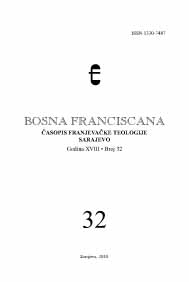
Keywords: The Roman Province of Dalmatia; early Christianity; The Diocese of Mactaris / Martaris (Ecclesia Mactaritana / Martaritana); The Diocese of Kotor (Ecclesia Catharitana)
With its bishop Victor (Victor episcopus), this early Christian diocese was mentioned only once in the acts of the Salonitan Metropolitan Synod (concilium metropolitanum), held on 15th July 530 which was presided over by Salonitan archbishop Honorius II (528-547). Stjepan Gunjača (1909-1981) named this diocese as the Mactaritan Bishopric (Ecclesia Mactaritana). However, he never discussed the problem of this diocese’s see or its territory. On the other hand, Ferdo Šišić (1869-1940) assumed that this could be the Bishopric of Kotor (Ecclesia Catheritana). Thus, taking into account the results of the previous similar investigations of the late ancient and mediaeval Christian institutions in the territory of the former Roman Province of Dalmatia, as well as the obvious fact that the Bishopric of Kotor has ancient roots, the aforementioned Šišić’s supposition seems to be correct. Namely, this was a diocese at the very south-eastern borders of former Roman Province of Dalmatia, that was formed from the early Christian communities of Boka Kotorska (Bocca di Cattaro) and its tightly connected area between the Adriatic and the Lovćen mountain massif.
More...Vom heutigen Stand der Forschung uber die Ramerzeit in der Geschichte Rumäniens ausgehend, aber auch von der Art der Untersuchung des Romanisierungsprozesses in Europa, versucht der Verfasser in Form eines Artikels, der als Arbeitsprogramm gedacht ist, den Romanisierungsprozess in Dazien auf breiterer Basis zu definieren; gleichzeitig analysiert eI' die wichtigsten Aspekte und Fragen im Zusammenhang damit und sucht die Formen seiner "Verwirklichung" zu erfassen.
More...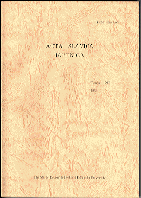
Keywords: Nationalism in the Balkans; Roma in the Balkans; Nationalism and social conditions;
Since the end of the 1980s, a growing tendency of nationalism has dominated Balkan society. Most observers of Balkan affairs have fixed their eyes on phases in which mutually antagonistic, usually violent, nationalist movements have clashed and collided with each other. By doing so, they tend to neglect more subtle, but at the same time hazardous to daily life, aspects of the phenomenon. What must be seriously reconsidered now is the “other side of the story” of the “Balkan tragedy.” Concretely speaking, the question lies in how the social situation of ethnic minorities has changed in these past ten years. In this paper, firstly, the author tries to find out a common tendency of nationalist pressure that threatens the existence of the Roma community in the Balkans as a whole. Then, the examination will focus on the distinctive features of nature of the contemporary Balkan nationalism. Finally, the effect of the “humanitarian” intervention will be brought into inquiry.
More...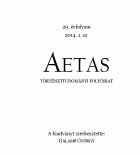
TAMÁS KOVÁCS - (M. Shane Bjornlie: Politics and Tradition between Rome, Ravenna and Constantinople. A study of Cassiodorus and the Variae, 527–554. Cambridge University Press, 2013) PÉTER SZÁSZ - (Thomas N. Bisson: The Crisis of the Twelfth Century. Power, Lordship, and the Origins of European Government. Princeton University Press, 2009) ÁRON BENCE - (G. Etényi Nóra: Pamflet és politika. A hatalmi egyensúly és Magyarország a 17. századi német propagandában. L’Harmattan, Budapest, 2009) ÁGNES TAMÁS - (Krasznai Zoltán: Földrajztudomány, oktatás és propaganda. A nemzeti terület reprezentációja a két világháború közötti Magyarországon. Publikon Kiadó, Pécs, 2012) HAJNALKA HLUCHÁNY - (Kozári Monika: A nyugdíjrendszer Magyarországon Mária Teréziától a második világháborúig. Gondolat Kiadó, Budapest, 2012)
More...Keywords: Đakovo; urban development; castrum; market town; parish church
The oldest medieval settlement in Đakovo developed on the later site of the parish church. We may thus conclude that the position of the parish church indicates the site of the settlement at the time of the formation of the parish in the early Middle Ages. Đakovo thus offers an opportunity to trace continuity from the eighth century onwards, yet for the area around the castrum and the town it may only be traced from the thirteenth century on. Later development of the town around the second centre was a consequence of the urban development in the feudal Middle Ages. The site of the parish church remained important into the twelfth or the thirteenth centuries, when, similarly to elsewhere in Croatia, a new public space (square) began to take shape outside the existing settlement, in the fi elds or in the proximity of an existing or newly erected feudal court. The parish church came to be the only trace of the old settlement, and the feudal court (burgh) the axis of a new administrative centre. In the late Middle Ages, these two separate entities functioned as one whole. The settlement around the parish church had not ceased to develop following the transfer of the administrative centre to a new location, and the burial intensity at the pertaining cemetery remained constant. This site, obviously, remained the main cemetery in Đakovo. Nonetheless, this area retained an agricultural appearance through the Middle Ages. The process that took place in Đakovo closely resembles urban developments in other old settlements of this type in Northern Croatia and Hungary.
More...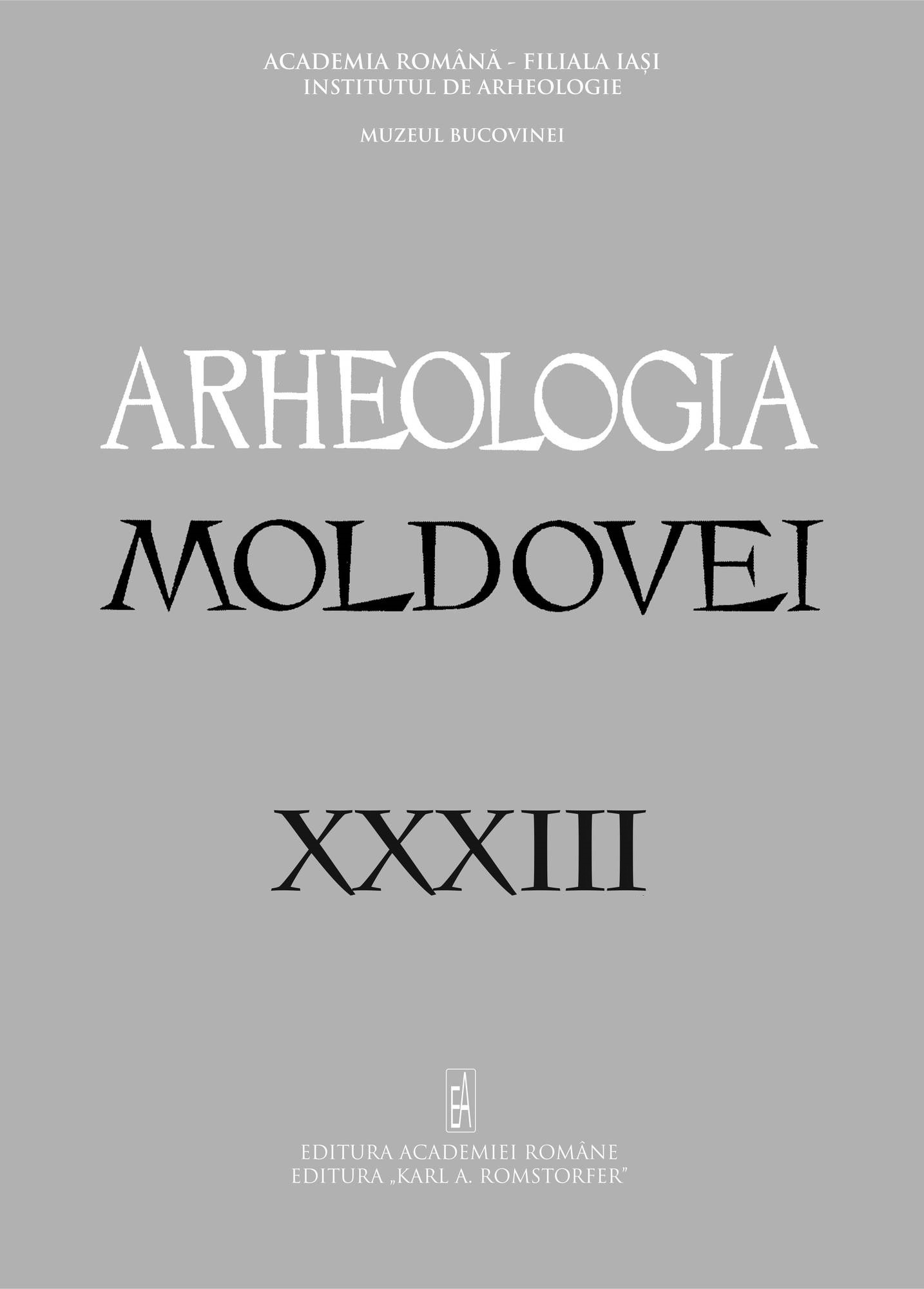
Keywords: Aniversaria; Tudor Soroceanu; Gheorghe Dumitroaia
Aniversaria; Tudor Soroceanu; Gheorghe Dumitroaia
More...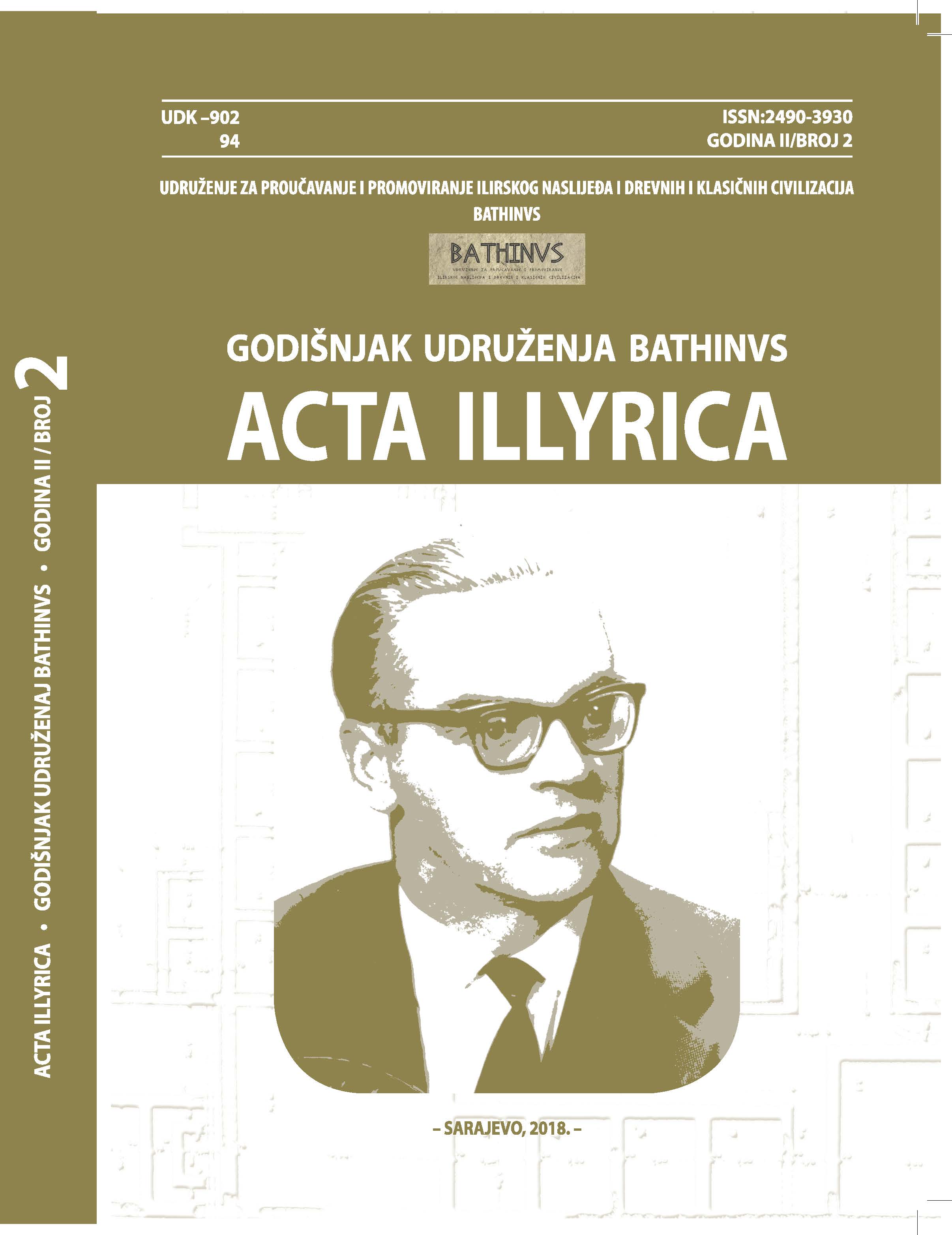
Keywords: travels during the Roman period;health;religious and trade reasons;souvenirs;prostitution;roads;road stations;catering facility;horseshoes;
Traveling for trade The territory of the inland of the Roman province of Dalmatia or the territory of present-day Bosnia and Herzegovina holds clear evidence that people had travelled for the purpose of healthcare, religion, trade, and relaxation. We can assume that the majority of the travels was for the purpose of business, but such type of travellingis more difficult to corroborate with material evidence. Exception is trade activities that have been unquestionably proven on the basis of discovered objects such as amphoras, jewellery, terra sigillata, lamps, and other objects. We can trace trade activities through uncovered fragments of Mycenaean pottery all the way from prehistoric period. Travelling for healthcare The facts that point out to medical “tourism” primarily refer to numerous spas and hot baths, and the existence of hospices and thermae in the territory of present-day Bosnia and Herzegovina. A part these refer to simple hot baths, mineral springs, earth springs, alkaline mineral water, salty and muriatic mineral springs, sulphate mineral springs, iron and sulphur springs and others. Some of the prominent springs in Bosnia and Herzegovina are sites near Podgradina near Mrkonjić Grad, Gornja Vogošća, ancient Domavia or present – day Srebrenica, Crni Guber, Crvena Rijeka, sulfuric acid spring in Srebrenica, Mala and Velika Kiselica, Ilidža near Sarajevo, Gornji Šeher and Slatina – Ilidža, Kiseljaci near Banja Luka, Gata near Bihać, Vrućica near Teslić, Slanac potok and Kulaši near Tešanj, Gradačac, Olovo, Kiseljak and Fojnica, Banja near Višegrad, Žepče, Ljeskovica and Orahovica, Rječica near Maglaj, Sočkovac near Gračanica, Bokavića – Šervar, Slanica and Dragunja near Tuzla, Dubnica and Jasenica near Zvornik, Rasol near Teočak, Jelovac near Prijedor and many others. Travelling for religious purposes Religious travels and pilgrimages can be assumed with much certainty on the basis of temples where religious ceremonies had been conducted. Such buildings must have assumed the arrival of believers from remote areas. In our case, we can single out the temple of Mithras in Jajce, the temple of Liber in Herzegovina, the temples of Minerva and Jupiter and many others. Prostitution as a possible cause of travelling An interesting object that paints intimate life is a spintria discovered at the site of Mogorjelo. This object probably served as a token for public houses and confirms the travels of population to bigger urban areas where such facilities existed. The object that was brought back represented a memory of a travel and the experience. The existence of road stations as an evidence of travelling Road stations with multiple purposes are another evidence of travelling activities. Such facilities near roads helped travellers to get some rest, as well as offered a place of residence for smaller military units that took care of the road security and prevent robberies on the road. We assume that road stations of different categories existed in the territory of present-day Bosnia and Herzegovina. These are mansiones, mutations and beneficiarial military – traffic stations. Some of the known road stations were located near the left bank of the Trebišnjica, in the plain below Crkvina, at the site of Ukšići in Ljubomir in Herzegovina. Traces of buildings suggest the existence of a road station Ad Zizio at the site of Lištana or southern part of the Livno municipality, at several assumed sites in the Mrkonjić Grad municipality, near Skelani and Domavia, near village Halapić in Glamoč municipality, in Sarajevo, Runovići, Bigesta and many other locations. Mode of transportation Travelling assumed two basic modes of transportation. The first and very common mode of transportation was by foot, and the second one was organized by means of animals such as horses, mules and alike. The presence of such mode of transportation was recorded though horseshoes that could have been used.
More...
Keywords: Sclavinia; term; border zone; Byzantine; West; East; ethnonym; sources; middle age; Christian empires
This article attempts to shed light on the emergence of Sclavinia as a term in the medieval sources. In the old Slavic written tradition Sclavinia never appeared, which shows that it was an external name. In majority of cases, Sclavinia was a term used by imperial elites and on courts in Byzantium and in the West. Is seems to have appeared simultaneously in the East and in the West in 780th when many Slavic tribes were included in the Frankish and Byzantine sphere of influence and dominance. Despite some differences, in general the term was used in the same way in Byzantium and in the West: for Slavic entities put in the process of subjugation to the empires. The reason for this similarity could be found in intentionally followed imperial examples and terminology in the West. Sclavinia was the official “imperial” border-zone term, for the area between the Slavic word and Christian empires, and was bound with the existence of these contact zones. It was not usually used for the territory deeply behind these borders, for non-imperial Slavic neighbours or for independent powerful Slavic states. As a term, Sclavinia lost its relevance with the disappearance of the small Slavic formations in imperial border zones, when they were assimilated into empires or evolved into larger independent state formations established under their own well-known names. Created from the demonym in a way very common in the Middle Ages, Sclavinia was still relatively rarely used. Although a suitable collective term, its weakness was its too general and uncertain meaning. In the West it was used far more and longer than in Byzantium, and there it could be find outside of the imperial court, which was not the case in the Eastern empire. It was used with some differences – only in singular in the West, and usually in plural in Constantinople.
More...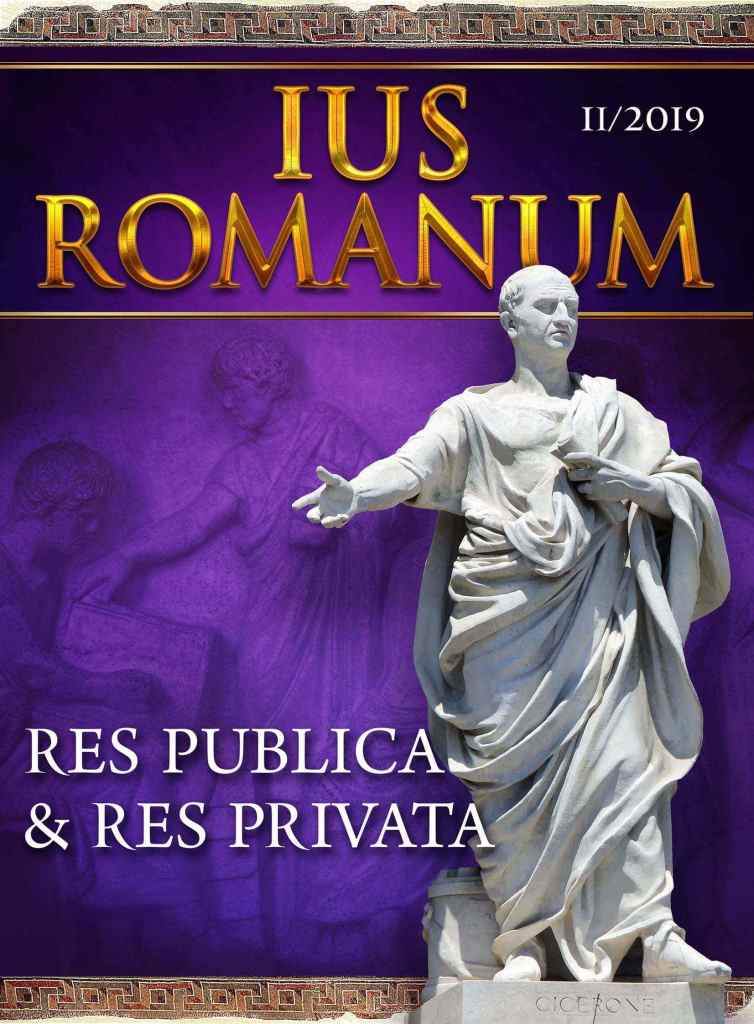
Keywords: bridges; Roman bridges; Justinian; curator viarum
Many bridges built in the ancient Rome have survived to the present time. In this presentation, the author does not focus his attention on the architectural, archaeological, construction or statistical aspects. He discusses, above all, the legal regulations concerning the bridges in the Justinian's legislation. He is looking for an answer to the question of who in the ancient times at the Romans’ supervised the bridges. He wonders if the curatores pontis existed? It touches on the question of building a "private" bridge, the correlation of bridge issues and servitude, the bridge versus assassination, the bridge versus a suicide or the bridge versus taxes paid by the Church. The Romans did not produce a comprehensive legal doctrine related to bridges. They treated roads or aqueducts much more precisely. Although the Justinian's legislation was treated marginally and incidentally about the bridges, and the current legislation on bridges is richer, dealing with, for example, in the Polish law the movement of the wild animals through them, so still the durability of the Roman bridges can be impressive.
More...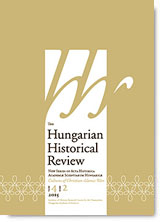
Keywords: voluntary conversions to Islam; conversion for marriage; female agency; Christian–Muslim frontier regions
This essay will attempt to offer a glimpse into the situations and considerations that played a role in the decisions of Christians, primarily women, who voluntarily stood among the Turks in the Hungarian–Ottoman contact zone. This insight will highlight marriages that spanned the Christian–Muslim borders. On the one hand because the letters of papal pardon which abandoned Christian spouses submitted to the Apostolic Penitentiary in order to gain permission to remarry serve as the basis for analysis; and on the other hand because marriage typically served as the gateway through which people entered the opposite culture. This essay places emphasis on those individual and group experiences that made voluntary movement between cultures possible and the situative character of individual and religious identity at the time.
More...